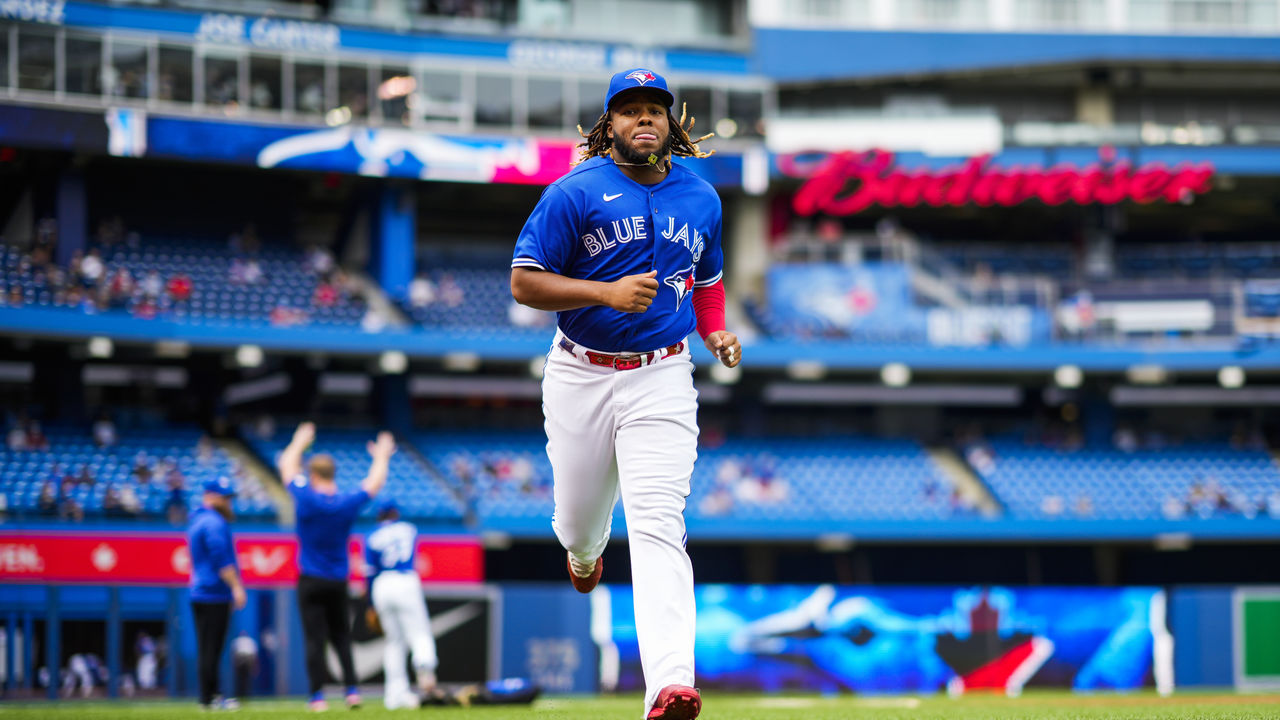What a deal would look like if the owners and players met in the middle
We're now 84 days into the MLB lockout, and the players and owners have made little progress toward reaching a new labor agreement. After a mostly quiet winter, the two camps are meeting this week in Florida with a greater sense of urgency to strike a deal and avoid missing regular-season games. The lockout has already become the second-longest work stoppage in the sport's history.
With the two sides entrenched in their positions, theScore was curious what a collective bargaining agreement would look like if both accelerated the process by meeting in the middle on some of their outstanding issues. Several items remain on the table - like revenue sharing, draft lottery, and expanded playoffs - but we're focused here on finding the midpoint regarding four key economic issues: arbitration eligibility, competitive balance tax thresholds, minimum salary, and the pre-arbitration bonus pool.
What does a middle ground look like, and how much would it cost?
Super Two
All players become eligible for arbitration, and the salary increases accompanying it, after accruing three years of major-league service time (a full year of service time is 172 days on a major-league roster or disabled list). Since 1991, a percentage of players with more than two years' service time are allowed to skip the final year of full team control and become eligible for arbitration. Since 2013, the top 22% in this group have earned the so-called Super Two status.
One of the MLBPA's demands has been to expand eligibility for salary arbitration. The union began these talks asking for the threshold to be lowered to two years for all players. It dropped the demand to 80% in a previous offer and decreased it again this week to 75%.

MLB hasn't budged from the status quo of 22%. After the 2021 season, 41 players were in the top 22%, including Brian Reynolds, Framber Valdez, Vladimir Guerrero Jr., and Austin Riley.
The middle point here is 48.5%.
This would move 49 additional players into their arbitration years this offseason. According to an analysis of MLB Trade Rumors's arbitration database, the average Super Two player since 2018 has earned $2.12 million in their first year of salary arbitration. Those 49 players would cost owners at least $76 million if you subtract the current base wage from the Super Two average.
There's also a compounding effect of Super Two players having four years of arbitration eligibility instead of three. Super Two players who advance through arbitration generally earn more than the average arbitration comparable salary - in part because they're often better players and because they have the additional year outside the minimum-wage levels.
Of course, many players are non-tendered as they become more expensive in later arbitration. So more players could be non-tendered if more players reach Super Two status. The risk remains that clubs could manipulate the service time of star prospects, pushing their debuts from June into the late summer.
Competitive balance tax
The players are trying to play catch up here, and the owners aren't willing to give back gains they've made by managing the growth of the tax thresholds.
From 2003-19, the last full season before the COVID-19 pandemic, league revenues grew 167%, from $3.88 billion to $10.37 billion, according to data published at Statista.
Meanwhile, the base tax threshold rose 76% in that period, from $117 million to $206 million.
Had the tax threshold risen by 5% annually since the start of the 2012 season, generally mirroring MLB revenue growth, it would have been $276 million last season.

The competitive balance tax is the issue where both parties seem most entrenched. In the two proposals made this week, neither side changed its demands. (They're also far apart on tax penalties and additional thresholds above the base.)
The middle ground would represent a 9% jump from last season and then average about a 2% increase during a five-year pact, double the growth of what MLB is proposing.
What would the near-term impact be? It's difficult to know how that might affect large-market team spending, especially with COVID-19 impacting revenues of the past two years. The Los Angeles Dodgers and San Diego Padres were the only clubs to exceed the tax level last year. The midpoint would allow the Dodgers, Padres, and Yankees to combine for another $70 million in 2022 before reaching the base tax threshold. But would they spend it?
Minimum salary
Unlike the competitive balance tax and Super Two, owners have inched toward players concerning the minimum salary. The middle point here would mark a significant raise over last season's $570,500 minimum salary, which was the lowest among the four major sports. No other North American league leans on its minimum salaried labor as MLB does.

Nearly two-thirds of players who stepped on a field in each of the last two full seasons were pre-arb or near-minimum salaried players. They made up 52% of all days of service time accrued.
Raising the 2021 minimum to this midpoint would increase total salaries for pre-arb players by $71.5 million in 2022.
Pre-arbitration bonus pool
While there's been little progress in talks, owners agreed to create a pre-arbitration bonus pool in their proposals. (The two sides are still far apart on the size of that pool.) History has shown that once an item is entrenched in the CBA, it's difficult to remove and can grow in unforeseen ways, such as the competitive balance tax.

A midpoint in this bonus pool eventually would bring the players' guarantees for all pre-arbitration and arbitration-eligible players to $350 million as expanded classes of Super Two players worked their way through arbitration. But don't worry too much for owners. If pre-pandemic revenue growth returns, the sport's overall earnings could grow from about $9.5 billion in 2021 to $12 billion or more by 2026.
Travis Sawchik is theScore's senior baseball writer.